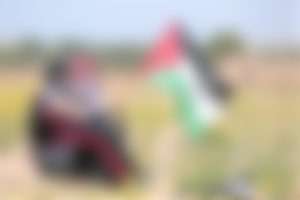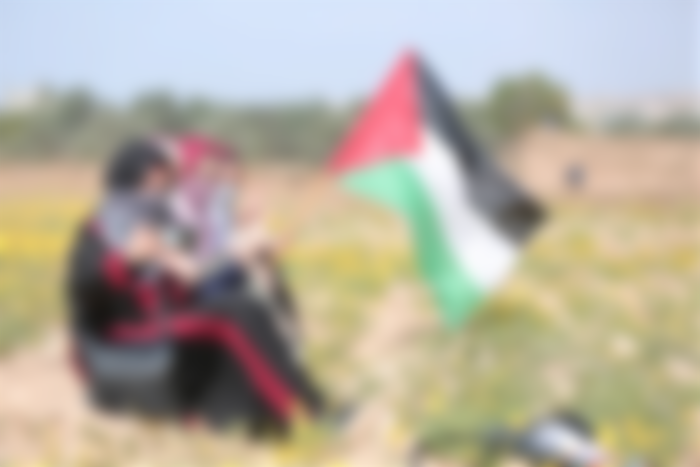In February 1947 the British government decided to disengage itself from the Palestinian situation which had become impossible to govern, thus creating the conditions for the international definition of the Israeli-Palestinian question. And the partition plan approved by the UN through Resolution 181 provided for the birth of an Arab state and a Jewish state (placing the Jerusalem area under international mandate). The conclusions of the commission of enquiry led by the British Robert Peel in 1937, which had proposed an initial division of the area into two states, were enlightening. An uncontrollable conflict had arisen between two national communities within the narrow borders of a small country: almost one million Arabs were at war, open or latent, with the community of 400,000 Jews who had arrived in Palestine through various waves of migration. The first partition recommended by the Royal Commission of Inquiry chaired by Lord Peel to ascertain the causes of the Arab revolt, which began in 1936, provided for the limitation of Jewish immigration to 12 thousand units per year and the partitioning of Palestine into a Jewish state on 20% of the territory (Galilee and the coastal strip), an Arab state on the remaining 75% and a permanent special mandate on Jerusalem and Bethlehem. The commission then recommended a transfer of populations to ethnically unify the two states, taking the attempts to resolve the Greek-Turkish crisis as a model. The method envisaged to obtain the transfer of populations was compensation. The British thought, therefore, to obtain the exchange in a consensual way. But if the Arabs opposed, they would have been ready to execute the plan by force. The Arab High Committee rejected this first plan. The Jews accepted its principle, but many of them considered the portion of the Jewish state unsatisfactory. At this point, however, the British withdrew the idea of partition because of the Arab opposition. The difficult international situation required the English not to displease the Arabs by throwing them into the ranks of England's enemies. After the victory in the Second World War, the situation continued to appear blocked. A new series of conferences and committees of enquiry highlighted the impossibility of reaching a satisfactory solution for both sides. But now, the British acceptance of India's independence also made British engagement in Palestine anachronistic. London, therefore, decided in February 1947 refer to the problem of Palestine to the UN.

In November 1947, with the horror of the Second World War, which ended just two years earlier, the international institutions found themselves engaged in a complex phase of geopolitics by redesigning the geography of some territories, which would deeply mark the political balances of the following decades. In this scenario, the United Nations General Assembly met in special session to examine the report of the Special Commission on Palestine. Resolution 181 passed on 29 November with 33 votes in favour 13 against and 10 abstentions. The UN measure was based on the conclusions of Unscop, a committee made up of representatives of 11 states (Australia, Canada, Guatemala, India, Iran, the Netherlands, Peru, Sweden, Czechoslovakia, Uruguay and Yugoslavia) and charged with studying the best solution for the new arrangement of the Palestinian territories, on which the United Kingdom had renounced its mandate, putting it back into the hands of the UN. Resolution 181, which established a plan for the partitioning of Palestine that gave rise to the birth of an Arab and a Jewish state (while Jerusalem was placed under international control) was a historical event that sanctioned through international law the legitimacy of national Jewish aspirations towards Palestine. The resolution provided for a partition of the Palestinian territory and created a Jewish state of 14,100 square kilometres with 558,000 Jews and 405,000 Arabs and an Arab state of 11,500 square kilometres inhabited by 804,000 Arabs and 10,000 Jews; and an area under international regime including Jerusalem, Bethlehem and other smaller villages with 105,000 Arabs and 100,000 Jews. The Jewish state represented 54% of the whole of Palestine. An economic union including the two states and the internationalised zone should have balanced the division. The definition of the status of Jerusalem can be found in Part III of Resolution 181. The project provided for the city to be established as a corpus separatum under special international regime administered by a Trustee Council (Trustsheep Council) on behalf of the United Nations. The Council was to draw up a statute for the city to ensure religious peace and coexistence between communities. After 10 years, the statute would be submitted to a referendum for possible amendments. The inhabitants of the international area would not have the citizenship of either the Jewish or the Arab state. British politics had clear responsibilities in what would later become the Middle East conflict, the typical multi-table game of the British had led them to delude the aspirations of the Arabs now those of the Jews. The situation on the ground and the role of leadership did the rest. While the Jews accepted a Jewish state below their hopes, but which could become a solid basis for development, the Arabs rejected the international solution seen as a Western diktat.

The decision of the General Assembly to divide Palestine between a Jewish and an Arab state, with the internationalisation of the Jerusalem area, proved incapable of bearing the weight of its intrinsic weakness. There was a fierce struggle between the Arab population (at that time the majority with 1,200,000 units) and the Jewish population (which had 600,000 inhabitants). The map showed three enclaves substantially arranged in a chessboard pattern that would have made the connections between the various parts of the Arab and Jewish states difficult. The complexity of the proposed solution would probably have required, in addition to the acceptance of both sides, a direct intervention of the UN and, above all, the active collaboration of Great Britain which, instead, continued to pursue its own interests even after the birth of the State of Israel. After the proposed partition began what can be defined as the first phase of the Arab-Israeli war. It lasted from November 1947 to May 1948: after the proclamation of the state of Israel on 14 May, a conventional war between the newly formed Jewish state and the armies of five Arab countries began. The Arab rejection of the compromise was motivated by the non-recognition of Jewish nationalism assimilated to Western colonialism and distrust of Jews (immigrants and natives) considered as outsiders. In the Arab world, from Syria to Aden, demonstrators assaulted American and Soviet diplomatic missions against Jews, setting their homes and synagogues on fire and causing numerous victims. This was the beginning of the bloody theory of clashes, revenge and brutality that has accompanied the history of the Middle East over the last seventy years. During the peace negotiations with the Netanyahu government and then with the Barak government, the Palestinian leadership demanded a return to the borders of Resolution 181 of 1947, which was objectively very advantageous for the Arabs given the current situation on the ground. But Israel replied that the rejection of the plan by the Arab world had caused it to lapse, thus freeing the two sides from any commitment. The Arab world's hostility towards the State of Israel and the five wars (the 1948 war, the Sinai conflict in 1956, the Six-Day War in 1967, the Yom Kippur war in 1973 and the Lebanon war in 1983) that followed after the Arab rejection of Resolution 181, effectively overturned the conditions on the ground. Jerusalem, which should have been the real symbol of coexistence, has become the stone of the scandal of a conflict all based on force. The most dramatic aspect of those events was the diaspora of 700,000 Palestinians (UN estimate), forced to flee or forcibly evicted, to which corresponds the flight of as many Jews from other Arab countries due to the spread of feelings against Israel. It was only the first act in the wake of wars and terrorist attacks, which subsequently bloodied the entire Middle Eastern area, and the beginning of a political, but above all humanitarian crisis that is still unresolved.



